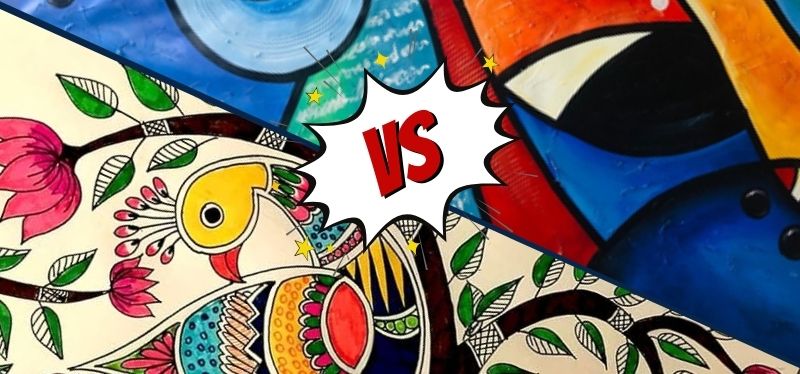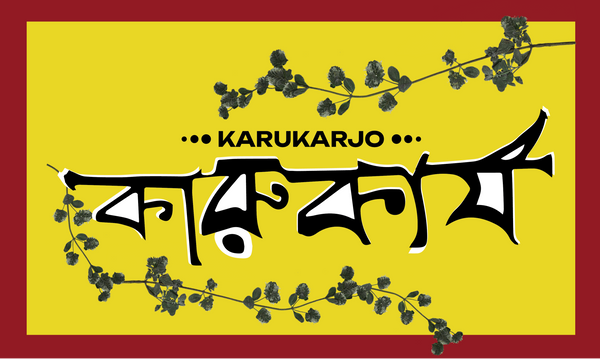
Traditional Art vs Modern Art: Bridging the Past and the Present
Art has always been a reflection of society, culture, and human emotion. Over time, as the world evolved, so did the expression of creativity. The contrast between traditional art and modern art is not just about technique—it’s a dialogue between history and innovation, between roots and reinvention. At Karukarjo, we explore this balance, celebrating both heritage and contemporary design through handcrafted creations.
What is Traditional Art?
Traditional art refers to creative works rooted in long-established cultural practices, passed down through generations. In India, this includes intricate paintings like Madhubani, Warli, and Pattachitra, as well as embroidery, sculpture, pottery, and folk music and dance. These art forms are often inspired by mythology, nature, rituals, and daily village life.
Key Features of Traditional Art:
- Rich in symbolism and storytelling
- Deeply cultural and region-specific
- Made using natural materials and methods
- Often handcrafted by skilled artisans
Traditional art values precision, discipline, and a deep connection to heritage. Each piece carries history, identity, and meaning.
What is Modern Art?
Modern art emerged in the late 19th and early 20th centuries as a break from classical traditions. It is characterized by experimentation, abstraction, and new perspectives. Modern artists focus more on personal expression, individual interpretation, and innovation.
In the Indian context, modern art saw pioneers like Raja Ravi Varma, M.F. Husain, and Amrita Sher-Gil, who blended Indian themes with global techniques. Today, modern art can be digital, conceptual, mixed-media, or minimalist, often challenging viewers to think differently.
Key Features of Modern Art:
- Emphasis on individual creativity and freedom
- Innovative use of materials and techniques
- Focus on emotion, idea, or commentary
- Less structured, more abstract
Modern art often asks questions rather than giving answers, pushing boundaries and inviting personal reflection.
Traditional Art vs Modern Art: The Core Differences
| Aspect | Traditional Art | Modern Art |
|---|---|---|
| Origin | Rooted in culture and heritage | Emerged with industrialization and urban life |
| Purpose | Ritual, storytelling, community identity | Self-expression, experimentation |
| Style | Decorative, detailed, symbolic | Abstract, minimal, conceptual |
| Materials | Natural dyes, handmade surfaces | Mixed media, digital tools |
| Audience | Local communities, cultural events | Global audience, galleries, digital platforms |
Finding Harmony Between the Two
While traditional art preserves the past, modern art embraces the present and future. Together, they represent the full spectrum of artistic expression.
At Karukarjo, we believe in the beauty of both worlds. Our collections feature traditional Indian art reimagined in contemporary formats—like hand-painted upcycled vases, modern dinnerware with folk motifs, and craft-based decor with a minimal twist.
We’re not choosing between tradition and modernity—we’re blending them.
Why This Balance Matters
- Preserving Heritage: Keeping traditional art alive supports artisans and cultural identity.
- Encouraging Innovation: Modern design attracts younger audiences and keeps art relevant.
- Sustainability: Traditional materials and techniques often align with modern eco-conscious values.
- Storytelling for Today: Art can honor history while speaking to current issues and aesthetics.
Karukarjo: Where Tradition Meets Modern Design
At Karukarjo, we craft decor and lifestyle products that celebrate the timeless elegance of traditional Indian art while adding a fresh, modern touch. Whether you’re drawn to the charm of old-world crafts or the edge of contemporary design, our handcrafted pieces connect you to India’s artistic soul in a new way.
Explore our curated collections and discover art that tells a story across time.
Visit: www.karukarjo.in
